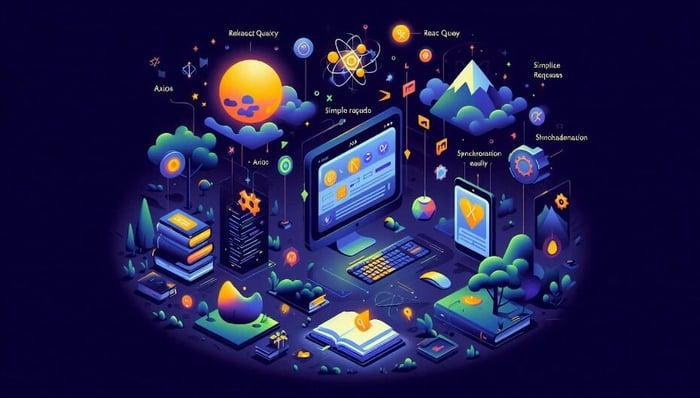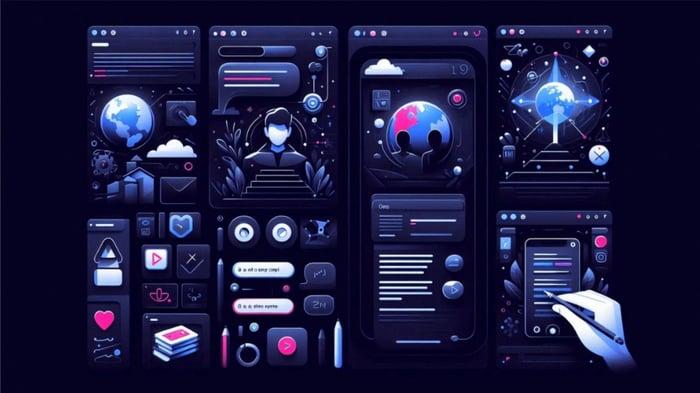

Turning UI Designs into HTML Code for Custom Websites
Table of Contents
How often have you been disheartened with your UI designs not reflecting the grand ideas in your head?
If your answer is any number above single digits, you are in the right place. Turning intricate UI designs into HTML code can be frustrating. This process, while crucial, is often time-consuming and prone to errors, resulting in a final product that may not fully match the original vision. The challenge lies in maintaining integrity in building a clean and efficient web design to code.
At its core, translating web designs to code involves more than just coding. It’s about bringing a designer’s vision to life in a functional, responsive website that works seamlessly across all devices. This process impacts the website's aesthetics, performance, and usability, making it essential for delivering a high-quality user experience.
Poor conversions can lead to inconsistencies, bugs, and a subpar UX, affecting the site’s usability and SEO performance. The seamless conversion from web design to code, on the other hand, ensures that the website is not only visually appealing but also performs well, providing a better user experience and SEO advantages.
There are certain steps that can make this process seamless, ensuring the final product is both visually appealing and functional. Given below are certain essential steps to help you understand the process better.
Essential Steps for Seamless Design-to-Code Conversion
Step 1: Creating Pixel Perfect, Live Prototypes
To begin, turning a static UI design into a live prototype involves converting visual elements into interactive components, ensuring the prototype behaves like the final product. Automating this conversion can save time and ensure accuracy. The key to this phase is making components interactive, such as adding form fields, videos, and other elements that provide real-time feedback.
This allows you to visualize the end product early in the development process. Real-time feedback during prototyping is crucial for refining designs, enabling developers to make adjustments and see the results instantly, ensuring the final product meets user expectations and design specifications.
Step 2: Ensuring Responsive and Interactive Designs
After prototyping, the next step is ensuring the design is responsive and interactive. Interactive designs require elements like hover effects, pressed effects, and animations to enhance user experience. Ensuring that the design remains consistent and interactive across all devices is crucial.
A significant aspect of modern web design is responsiveness, meaning websites must adapt to different screen sizes and devices. This involves automatically adjusting the layout to provide a seamless experience for users on any device. Consistency in design is essential for user experience, and maintaining a clean design canvas ensures that all elements are aligned and styled consistently across the website.
Step 3: Starting with High-Quality Code
Moving on, starting with high-quality code is fundamental to the success of any website. A clean and maintainable code is the foundation of a successful website. Automatically detecting similarly styled elements helps in generating cleaner and more efficient Cascading Style Sheets (CSS), improving performance and making the code easier to manage. Customization is key in web development, allowing developers to customize the structure of components to meet specific requirements and standards.
Dynamic data is an integral part of modern websites, supporting the integration of real-time information to keep the website up-to-date and relevant. Utilizing automation tools can identify design components and properties, streamlining the conversion process and reducing the chances of errors, ensuring that the final HTML code is both accurate and efficient.
Step 4: Generating Responsive Code
Finally, generating responsive code is essential for ensuring that the layouts adapt to different screen sizes and devices for a consistent user experience. Flexible layouts are crucial for responsive design, ensuring that layouts adapt to different screen sizes and devices for a consistent user experience. Choosing the right units for sizing, whether pixel sizes or relative units like em and rem, is essential for responsive design, ensuring that the design scales appropriately on all devices.
Media queries are fundamental for responsive design, allowing you to add tailored CSS for specific elements and screen sizes. Control and flexibility are crucial in web development, as they provide you with the tools you need to maintain control over the final HTML output and ensure that the website meets all design and functionality requirements.
By following these essential steps, you can ensure a smooth transition from web design to code, resulting in a high-quality, responsive, and visually appealing website. Check out the CodeParrot.ai to make this process more efficient and accurate, bridging the gap from web design to code.
How to Convert UI Designs to HTML Code?
Method 1: Using ChatGPT with Custom Prompts
One of the simplest methods to convert web design to code is by using ChatGPT with custom prompts. You can input your UI design URL into ChatGPT and use specific prompts to generate HTML and CSS code. This method leverages AI to provide a quick and accurate conversion, reducing the time and effort required.
Here’s a smart prompt that you can tweak and feed GPT to convert web design to code:
“Please generate the HTML and CSS code for a UI design that includes a simple layout with a header, a navigation bar, a main content area with two columns, and a footer. The header should have the title 'My Website' and the navigation bar should include links to 'Home', 'About', 'Services', and 'Contact'. The main content area should have a paragraph of text on the left column and an image on the right column. The footer should state '© 2024 My Website'. Please include responsive design features.”
Method 2: Utilizing AI-Powered Apps
Another effective method is to use AI-powered apps designed for web design to code conversion. Tools like CodeParrot.ai automatically convert your UI designs into clean, functional HTML and CSS code. These apps streamline the process, ensuring that the final product closely matches the original design. Watch the process here.
Method 3: Right-click and Inspect the Element
For developers who prefer a hands-on approach, using the right-click and inspect element feature in web browsers can be helpful. This method allows you to manually inspect and extract HTML and CSS code from your designs. While more time-consuming, it provides complete control over the conversion process.
Let’s take an example:
- Open your browser and navigate to the webpage containing the UI design you want to convert.
- Right-click on the design element you want to convert and select "Inspect" or "Inspect Element" from the context menu.
- The browser's developer tools will open, highlighting the HTML code corresponding to the selected element.
- Copy the highlighted HTML code and paste it into your HTML file.
- Look for the associated CSS in the developer tools. It is usually in the "Styles" pane.
- Copy the necessary CSS rules and paste them into your CSS file.
Method 4: Using Design-to-Code Plugins
Many design tools, such as Figma and Sketch, offer plugins that facilitate web design to code conversion. These plugins can export design elements directly into HTML and CSS, ensuring that the code generated is optimized and adheres to best practices.
Method 5: Hiring a Professional Service
For complex projects, hiring a professional service that specializes in web design to code conversion can be beneficial. These services provide expertise and ensure that your designs are accurately translated into high-quality code, saving you time and ensuring the best results.
Challenges in Design to Code Conversion
While the benefits are significant, there are several challenges to consider in the web design to code conversion process:
- Rasterization and Grouping: Rasterization involves converting vector graphics into pixel-based images, which can lead to loss of quality and scalability issues. Grouping refers to logically organizing design elements, and improper grouping can disrupt the design’s structure and functionality.
- Final Code Logic and Quality: Ensuring the logic and quality of the final code is critical. Poor logic can result in bugs and performance issues, while low-quality code can be difficult to maintain and extend.
- Responsive Design Challenges: Making designs adapt to various screen sizes can be complex. It requires careful planning to ensure elements resize and reposition correctly without breaking the layout.
- Business Logic Integration: Integrating specific business logic into the final code can be challenging. This often requires additional customization to ensure that the application behaves as intended in various scenarios.
- Framework Support Limitations: Automated tools may not support all frameworks, leading to compatibility issues. This can necessitate manual adjustments to ensure the code works with the chosen framework, adding to the development time.
Benefits of Automating Web Design to Code
Despite these challenges, the benefits of automating the web design to code process are compelling:
- Increasing Speed and Efficiency: Automation significantly boosts speed and efficiency in web development by quickly converting web designs to code, reducing development time.
- Ensuring Quality and Consistency: Automation ensures the final product is high-quality and consistent with the original design, providing a seamless user experience.
- Enhancing Design Precision: Automation eliminates human errors, ensuring the final code is precise and accurate, closely matching the original design specifications.
With all the benefits stated above, it’s equally important to keep in mind the limitations of automating the process of converting a web design to code.
Limitations of Automating Web Design to Code
- Understanding Limitations of AI Models: AI models can have limitations; you must review and refine the output to ensure it meets all requirements.
- Addressing Challenges with Business Logic Integration: Integrating business logic can be challenging and may require additional customization to ensure correct implementation.
- Handling Framework Support Limitations: Automated tools may not support all frameworks, necessitating manual adjustments to ensure compatibility with the specific tech stack.
Conclusion
Converting UI designs to HTML code can often feel like an uphill battle, but with the right approach and tools, it doesn't have to be. By following the steps outlined in this article, you can ensure a smooth transition from design to code, creating a high-quality, responsive, and visually appealing website. Whether you're using AI-powered tools like CodeParrot.ai, design-to-code plugins, or even manual methods, each technique has its advantages that can help streamline your workflow.
Remember, the key to success lies in preparation and choosing the right tools to maintain design integrity and efficiency. By embracing automation and refining your processes, you can save valuable time, allowing you to focus on the creative aspects of your projects.
Related articles

Development using CodeParrot AI




